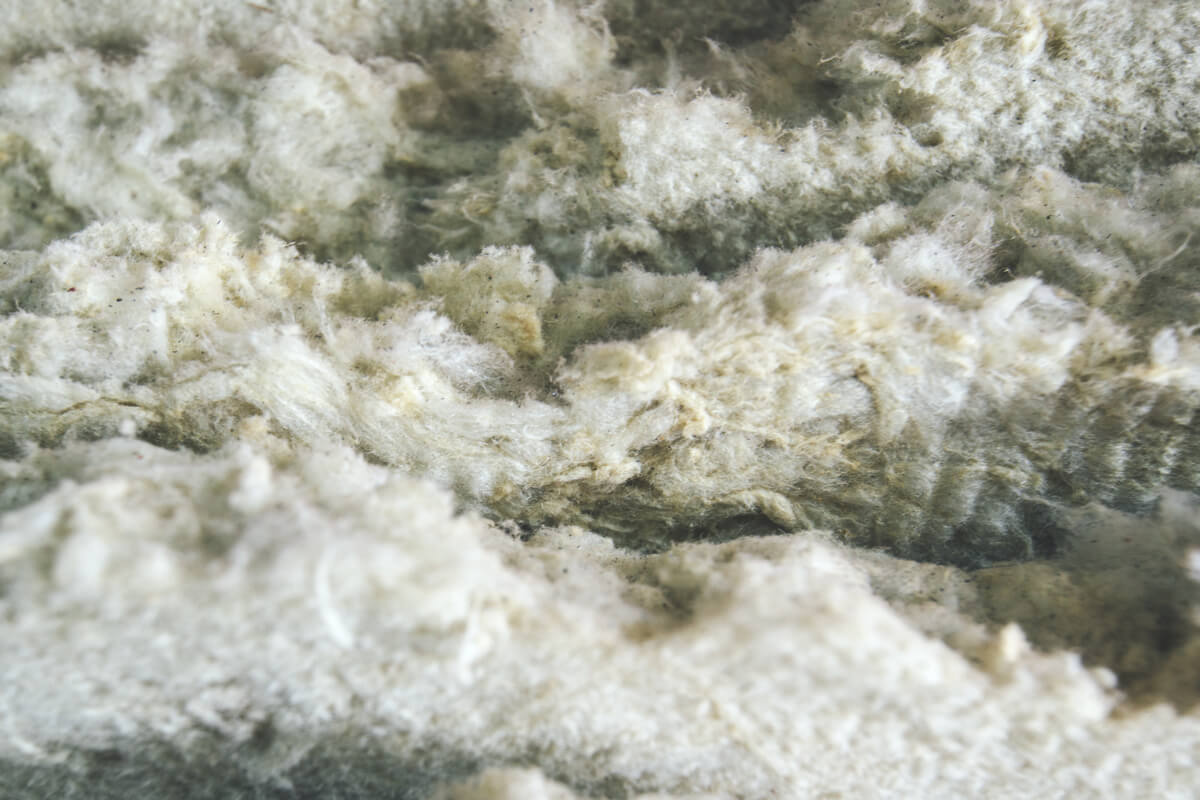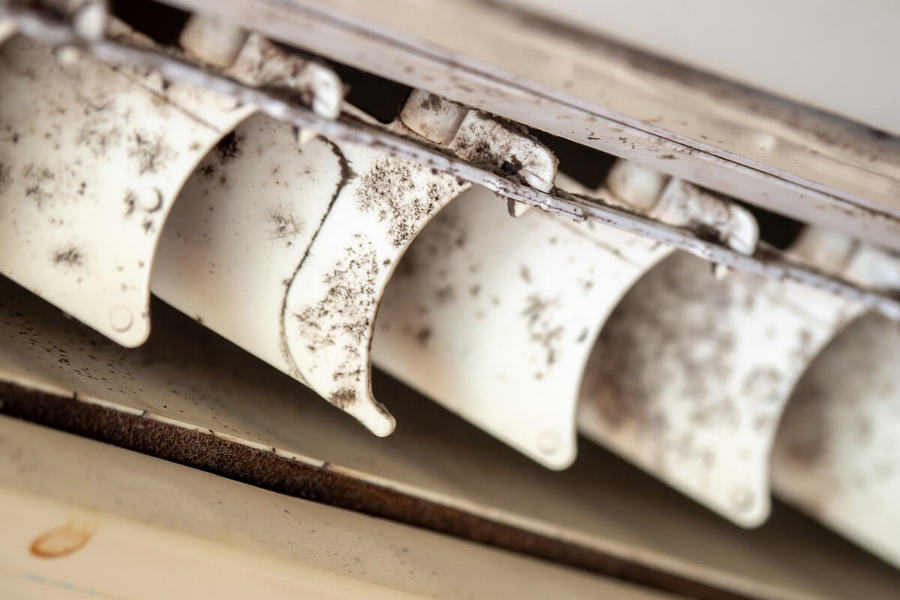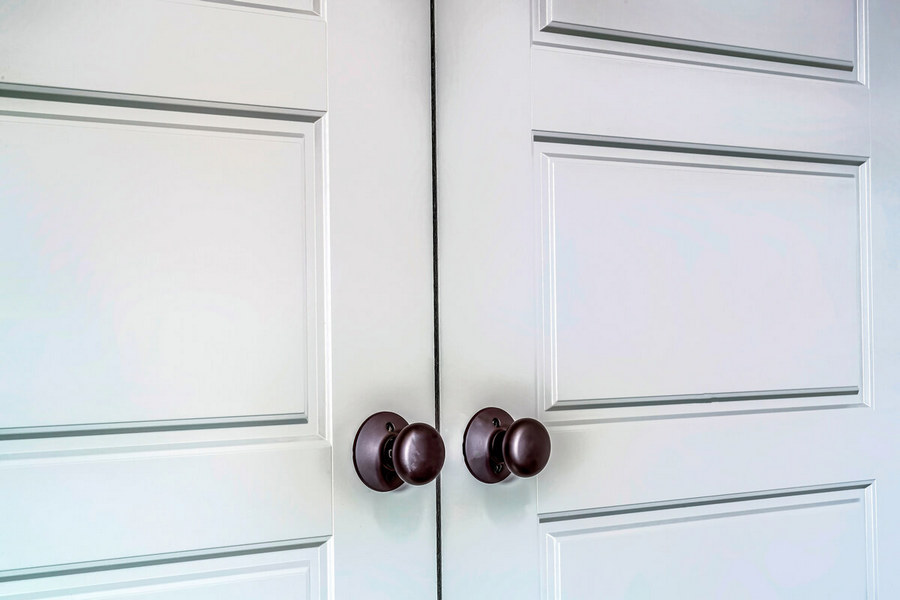Are you done with your spring cleaning? Well, think again. You’ve probably missed a ton of fiberglass, and it’s not your fault. Fiberglass dust particles range from 1 to 1000 microns in size, which means they’re not visible to the naked eye.
So, how does one get rid of this fiberglass dust? You may be thinking: why not just let the fiberglass dust be if it’s not even visible? Is it harmful to us? Keep reading if you wish to know the answers to all the questions troubling you.
What Does Fiberglass Dust Look Like?
What exactly is fiberglass dust? When we trim or saw fiberglass, it sheds off tiny particles. These particles are commonly known as fiberglass dust.
As mentioned earlier, you can’t see the fiberglass dust with your naked eye. However, if you were to put it under a microscope, you’ll notice that fiberglass dust is white and looks fluffy. When observed under lights, you’ll be able to see a slight shine too.
But, don’t be fooled by the small size and harmless appearance of these tiny particles. If you’re exposed to fiberglass dust for long, it can be harmful to your health. For example, it may cause skin irritation or make it difficult for you to breathe. So, it is essential to clean up fiberglass dust as soon as possible.
Fiberglass Dust Contamination Symptoms
As mentioned above, fiberglass can become a health hazard. So how can you tell if fiberglass dust is affecting your health? The symptoms may vary from person to person, but fiber dust can generally irritate the eyes, skin, and respiratory system.
There isn’t much research regarding the matter, but if fiberglass dust reaches the lower regions of your respiratory system, it can get hazardous. You may experience some of the following symptoms if you’re in an area with high levels of fiberglass dust:
- Cough
- Dry skin
- Sneezing
- Pressure in eyes
- Breathlessness
- Irritated eyes
- Sinus issues
- Inflamed tongue
If you experience any of these symptoms, we suggest hopping into a shower and getting into a different set of clothes. But, most importantly, move away from the contaminated area.
How to Get Rid of Fiberglass Dust in the House
Unfortunately, a sweep across the house is not going to help get rid of fiberglass dust. Cleaning up fiberglass is a bit more complicated than that.
So, let’s take a look at what you need to do to get rid of fiberglass dust particles completely from your home.
Step One: Wear Protective Gear
Before you start looking for fiberglass, you need to ensure you are well-protected. You need to get some protective gear for yourself to keep your body safe from the particles. Wearing goggles and a mask will stop the dust from getting into your eyes, nose, and mouth.
It’s best to wear clothes that cover all your skin to prevent any skin irritation. So we suggest long-sleeved shirts, pants, and not to forget gloves. Fiberglass dust can also get stuck to your hair, which is why we suggest wearing a cap to prevent scalp irritation.
Step Two: Locating the Source of Contamination
Now that you’re dressed appropriately, it’s time to find the contaminated area and the source of the fiberglass dust. The fiberglass dust can originate from your insulation or air duct system.
Unfortunately, you will have to replace your whole air duct system if it’s from the air duct as removing fiberglass from that is impossible.
Step Three: Clearing Your House
Before you start cleaning up the contaminated area, it’s best to move out your furniture. Once you’ve emptied the room, you’ll have more space to work with. That way you can also clean more thoroughly. You won’t have to worry about any fiberglass particles hiding underneath the furniture. Plus, clearing out space will make it easier for you to move around.
Keep in mind that some items cannot be cleaned. For instance, sheets, beddings, and carpets are impossible to clean as fiberglass dust particles will remain stuck inside them. So it’s best to discard these kind of items.
Step Four: Using a HEPA Vacuum Cleaner
To clean up the area, it’s best to use a ULPA or HEPA vacuum cleaner, as these vacuums are designed to catch micro particles like fiberglass dust.
We suggest focusing on areas where dust tends to gather more, like behind the doors and windows. For the best results, vacuum around the area multiple times. That’ll ensure a thorough clean up!
Step Five: Cleaning the Rest of the House
After you’ve tackled the contaminated area, it’s time to clean up the rest of your house. Vacuum around all the rooms, and mop the floors. When you start moving back your furniture and other stuff, it’s a good idea to clean them before putting them back in their place.
We’d also suggest giving the ceiling, walls, and floors a good scrub. If you have ceiling fans and lights, now’s your chance to clean them too. If you feel like the task is too much for you to handle alone, you can consider hiring a cleaning company.
Step Six: Get New Furniture
If you’ve had to throw out some of the stuff because of the fiberglass infestation and are looking for replacements, we’d suggest buying new furniture. Older furniture may be cheaper, but you don’t really know how hygienic it is.
We suggest going for furniture that has the least toxic components. For that, natural fiber products are the best option.
Tip: Stay away from plywood and synthetic products!
Step Seven: Ventilate Your House
Hold on a minute, don’t just settle back into your house just yet! There’s one last step left. You need to make sure your house is properly ventilated to make sure you get rid of all the fiberglass dust.
Open the windows and allow fresh air to enter your house. We’d suggest leaving the windows open for a good twenty-four hours. It might also help if you have a HEPA air scrubber as it can get rid of harmful particles.
Summary
Fiberglass dust may be small and tough to get rid of, but it’s not impossible. If you detect any fiberglass dust particles in your home, you can simply use our guide to get rid of them.
It’s a seven-step process that’s easy to follow along. Here’s a brief run through the process:
- Wear protective clothing such as gloves, goggles, and masks to protect yourself from fiberglass dust.
- Identify the source of contamination and the affected area.
- Clear your house of the furniture and your belongings to make cleaning easier.
- Use a UPLA or a HEPA vacuum cleaner to clean the fiberglass dust particles.
- Clean the rest of the house.
- Replace furniture and items that cannot be cleaned.
- Finally, ventilate your house before you move back in.







